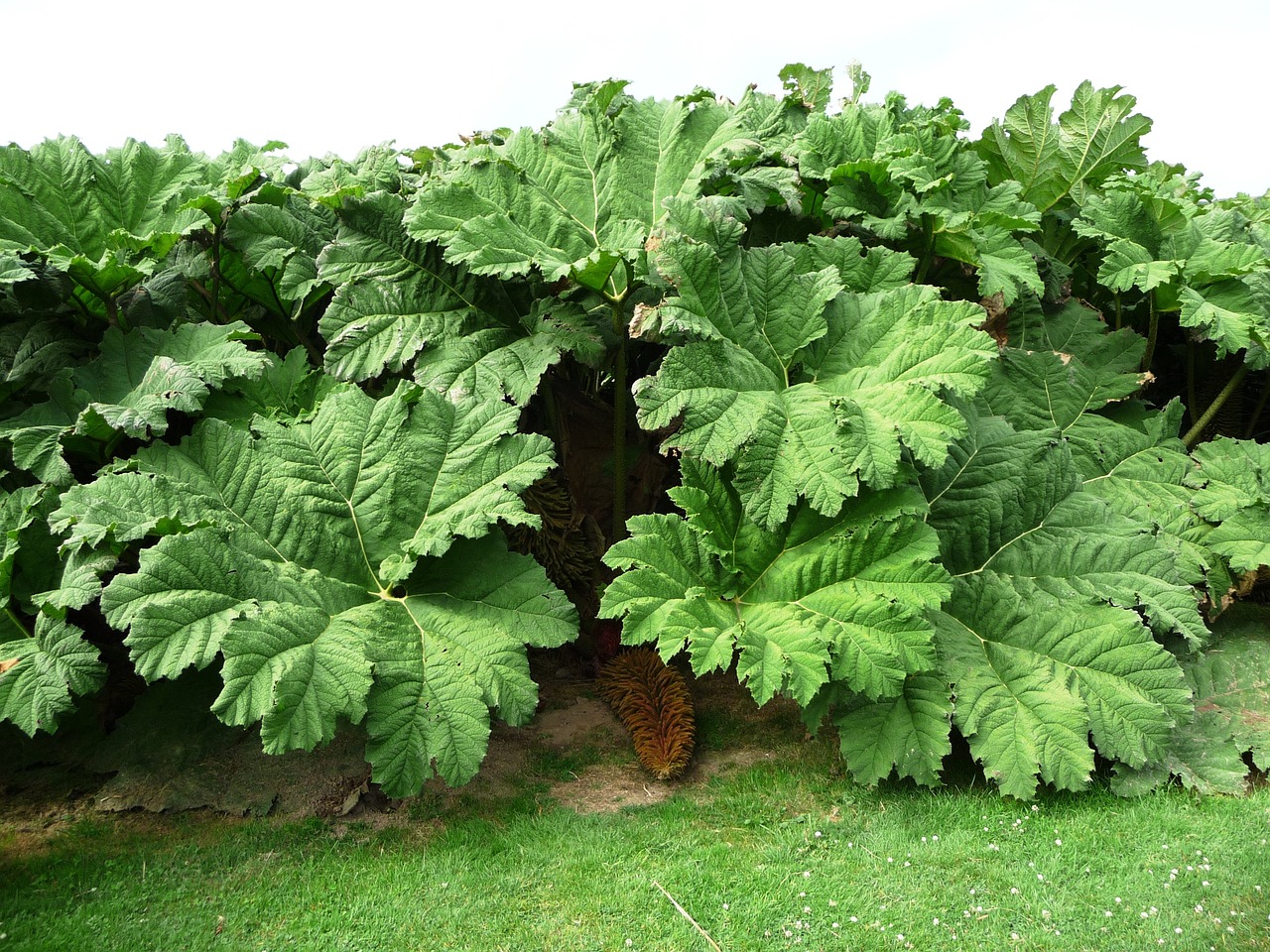Giant Hogweed
Giant Hogweed (Heracleum mantegazzianum) is a highly invasive and potentially dangerous plant species native to the Caucasus region of Central Asia. Introduced to Europe and North America as an ornamental plant in the 19th century, it has become a significant environmental and public health concern. Giant Hogweed poses a serious threat due to its aggressive growth, toxic sap, and ability to outcompete native vegetation.
The plant is characterized by its enormous size, with stems that can grow up to 20 feet (6 meters) tall, large compound leaves, and umbrella-shaped clusters of white flowers. Giant Hogweed is often mistaken for other similar-looking plants like Cow Parsnip (Heracleum maximum) and Queen Anne's Lace (Daucus carota), but it can be distinguished by its much larger size and the presence of purple blotches and stiff hairs on its stems.
One of the most hazardous aspects of Giant Hogweed is its sap, which contains phototoxic chemicals known as furanocoumarins. When the sap comes into contact with human skin and is subsequently exposed to sunlight, it can cause severe burns, blisters, and even permanent scarring—a condition known as phytophotodermatitis.

Removal and Control Methods:
Controlling Giant Hogweed requires extreme caution due to its toxic sap. It is advisable to seek professional help when dealing with this invasive plant. Here are some methods used for its removal and control:
Herbicides: Chemical herbicides can be used to control Giant Hogweed, but they should only be applied by licensed professionals using the appropriate safety precautions. Herbicides can be effective for large infestations and can prevent the plant from producing seeds.
Manual Removal: In small infestations or areas where herbicides are not suitable, manual removal can be attempted. However, this should be done with extreme care to avoid contact with the sap. Wear protective clothing, including gloves and eye protection, and avoid touching your face while working with the plant.
Mowing and Cutting: Mowing or cutting the plant before it flowers can help prevent seed production. However, this method is not recommended for mature plants, as they can regrow from the cut stems.
Solarization: In areas where the use of herbicides is not feasible, solarization can be attempted. Covering the plants with clear plastic during the hottest months of the year can help scorch and weaken the plants.
Prevention and Early Detection: The most effective way to control Giant Hogweed is through prevention and early detection. Educate the public about the plant's dangers and discourage its cultivation in gardens. Detect and remove new infestations before they become established.
Professional Assistance: Due to the risks associated with Giant Hogweed, it is strongly recommended to seek professional assistance from experienced invasive species management teams. They have the knowledge, expertise, and safety measures in place to handle this hazardous plant.
Do you need help removing Giant Hogweed?
Remember, if you come across Giant Hogweed, avoid touching it and keep a safe distance. If you need to remove it, take all necessary precautions and consider seeking professional help to ensure safe and effective control. Early intervention and responsible management are essential to prevent the further spread of this hazardous invasive plant.
Contact us today if you want help removing Giant Hogweed from your garden.
